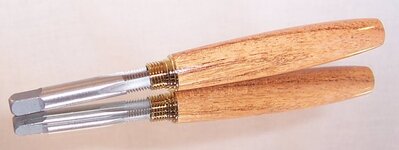mick
Member
Been making a lot of closed end Gents and Barons lately and ran into a problem. I put one together and don't like the plating and wood combination. Is there a good way to get the nib coupler out of the closed end barrel without damaging the pen barrel or the coupler. I've got a couple of ideas but don't want to mess either up.

